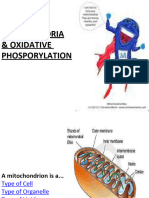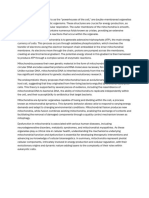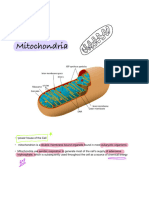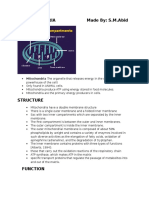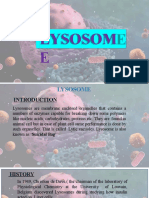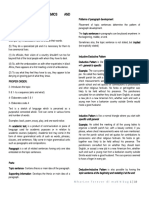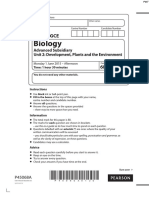Notes on Mitochondria
1. What is a Mitochondrion?
Mitochondria are membrane-bound organelles found in the cytoplasm of eukaryotic cells.
Known as the "powerhouses" of the cell because they produce energy in the form of ATP
(adenosine triphosphate).
2. Structure of Mitochondria:
Outer Membrane: Smooth and covers the entire mitochondrion. It separates the
mitochondrion from the cytoplasm.
Inner Membrane: Folds into structures called cristae, increasing surface area for chemical
reactions. Contains enzymes involved in cellular respiration.
Matrix: The inner fluid-filled space inside the inner membrane. It contains enzymes, DNA,
and ribosomes for protein synthesis.
Intermembrane Space: The space between the inner and outer membranes where protons
(H⁺ ions) accumulate during energy production.
3. Function of Mitochondria:
ATP Production (Cellular Respiration):
o Mitochondria convert nutrients (mainly glucose) into energy (ATP) through a
process known as cellular respiration.
o This process occurs in three main stages:
1. Glycolysis (occurs in the cytoplasm)
2. Krebs Cycle (occurs in the matrix)
3. Electron Transport Chain (occurs across the inner membrane)
Energy Source: ATP produced in mitochondria is used by the cell for various activities,
including growth, division, and movement.
Calcium Storage: Mitochondria help store calcium ions, which play a crucial role in regulating
cellular activities.
Regulation of Cell Death: Mitochondria are involved in apoptosis (programmed cell death)
by releasing certain proteins that trigger the process.
4. Mitochondria and DNA:
Mitochondria have their own circular DNA (mtDNA), which is inherited maternally.
Mitochondria replicate independently of the cell’s nuclear DNA.
This unique characteristic supports the theory that mitochondria were once free-living
bacteria that formed symbiotic relationships with eukaryotic cells.
5. Mitochondrial Diseases:
Disorders related to mitochondrial function can result in energy deficiencies and various
health issues. These include conditions affecting muscles, the nervous system, and organs
that require a lot of energy.
Common mitochondrial diseases include Leber's hereditary optic neuropathy (LHON) and
mitochondrial myopathy.
�6. Mitochondria in Different Cell Types:
Mitochondrial number and structure vary between different cell types depending on their
energy needs. For example:
o Muscle cells (especially cardiac and skeletal) contain a high number of mitochondria
because they require more energy for movement.
o Red blood cells, on the other hand, have no mitochondria.
7. Mitochondrial Dynamics:
Mitochondria are dynamic organelles that undergo processes such as:
o Fission: Splitting of one mitochondrion into two.
o Fusion: Combining of two mitochondria to form one.
These processes help maintain mitochondrial function and respond to the cell's energy
requirements.
8. Importance in Aging and Diseases:
Mitochondrial dysfunction is associated with aging and several diseases, including
neurodegenerative diseases (e.g., Alzheimer’s, Parkinson’s).
Research is ongoing to understand how mitochondrial health impacts overall cellular
function and longevity.
Summary: Mitochondria are essential organelles responsible for producing energy
(ATP) for cellular functions. They have a unique structure, including two membranes
and their own DNA. Mitochondria are involved in energy production, calcium
storage, and regulating cell death. Their dysfunction can lead to diseases, and their
dynamics are essential for maintaining cellular health and efficiency.

















